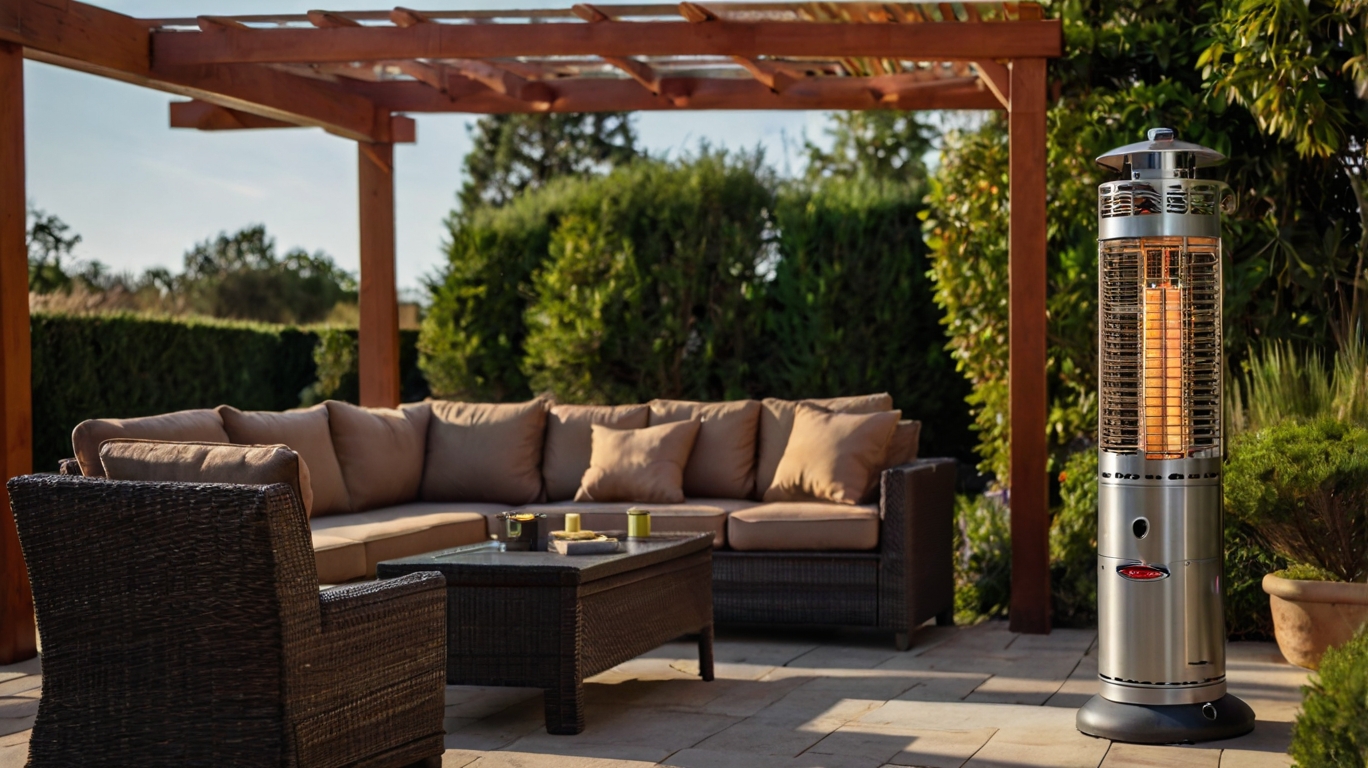Aussies love spending time outside and a drop in temperature doesn’t have to ruin that. A patio heater can extend your outdoor season well into the cooler months, whether it’s a Saturday night BBQ with mates or a quiet morning coffee on the verandah.
If you’ve been looking around you’ve probably noticed there are two main types: gas and electric. Both will keep you warm but they work differently and suit different situations. Let’s go through how each one stacks up so you can decide what’s right for your place.
Gas Patio Heaters – The Basics
Gas heaters run on either LPG bottles or natural gas connected to your home’s supply. When the gas burns it produces heat that radiates into the surrounding air. You’ve probably seen the tall “mushroom” style ones outside cafes but there are also wall mounted, tabletop and pyramid style ones.
Why people like them:
- Strong, fast heat: They can pump out serious warmth even on a cold night.
- Portable with LPG: If you use bottled gas you can move the heater wherever you want.
- No need for a power point: Good for areas where there’s no power.
The trade-offs:
- Ongoing fuel costs: LPG bottles need topping up and prices can vary.
- A bit more maintenance: Burners and connections need regular checks.
- Fumes: Not suitable for enclosed areas as they produce carbon dioxide.
Electric Patio Heaters – How They Work
Electric heaters use infrared elements to create radiant heat. Instead of warming the air they warm the people and objects in their line of sight.
They come in slim wall panels, freestanding poles or ceiling mounted styles. Many plug straight into an outdoor socket but larger models might need to be hardwired.
Why they’re popular:
- Low maintenance: No fuel bottles, no burners, no mess.
- Quiet: They run silently with no fan noise.
- Safe for enclosed patios: No fumes to worry about.
- Instant warmth: You feel it within seconds.
The downsides:
- Needs a power source: You’re limited to where you have an outlet or wiring.
- Smaller coverage: Better for targeted heating than for big open areas.
- Power costs: Long hours will show up on the electricity bill.
Heat Output – How Much Warmth You Get
Gas heaters generally have the edge for sheer output. They throw heat further and cope better with wind which is why you see them in large outdoor dining areas.
Electric heaters are more focused. They work best for smaller spaces where people sit close together. On a still night they feel cosy and efficient but in a big open space the warmth fades quicker.
Running Costs – What You’ll Spend
In Australia a 9kg LPG bottle costs around $25–$35 and might last 7–10 hours on a high setting with a large heater. Natural gas is usually cheaper per hour but requires professional installation.
Electric heaters can be cheaper to run in smaller spaces. A 2.4kW model might cost around 60–70 cents per hour depending on your local energy rates. If you need more than one unit to heat a large area the savings narrow.
As a guide:
- Gas (LPG): Around $2.50–$3.50 per hour.
- Electric (2.4kW): Around $0.60–$0.70 per hour.
Installation and Setup
- LPG Gas: Just connect the bottle and hose and you’re ready to go.
- Natural Gas: Needs a licensed gas fitter to install an outdoor connection.
- Electric (plug-in): Simply plug it in.
- Electric (hardwired): For bigger units you’ll need an electrician.
Safety
“Most gas heating systems are perfectly safe, but it’s important to keep them well maintained to avoid gas leaks and carbon monoxide leaks, both of which can be fatal. Make sure your system is installed by a professional gas fitter. Be wary of using an unflued gas heater,” says Metropolitan Air Conditioning.
Electric heaters don’t produce emissions, so they’re fine for enclosed patios. Just make sure they’re weatherproof and positioned away from water sources. When choosing any type of space heater, it’s important to think beyond placement and ventilation, built-in safety mechanisms can make a big difference.
A safe space heater will include an automatic shut-off mechanism that activates if the device tips over or overheats, significantly reducing the risk of house fires.
Environmental Impact
Electric heaters don’t produce emissions directly but their overall footprint depends on how your electricity is generated. In states with a high share of renewables they’re generally a cleaner option.
Gas heaters produce greenhouse gases when they run so they’re less environmentally friendly. If lowering your carbon footprint is a priority, an electric model powered by solar is a good choice.
Looks and Space
Gas heaters make a statement, especially the tall stainless steel ones or those with visible flames. They add atmosphere as well as warmth.
Electric heaters are sleeker and less noticeable. Wall- or ceiling-mounted models save floor space and blend into the background.
Quick Decision Guide
- Large, open areas: Gas will cover more space.
- Small or enclosed patios: Electric is safer and more efficient.
- Frequent use: Electric can be cheaper in smaller spaces; natural gas may suit larger gatherings.
- Portability: LPG gas wins for flexibility.
- Low fuss: Electric has less to maintain.
Choosing the Right Heater for Your Space and Lifestyle
There’s no single “best” patio heater – it comes down to your space and how you use it. Gas offers powerful heat and flexibility for bigger areas, electric is clean, quiet and easy to run in smaller spaces.
Think about where you’ll put it, how often you’ll use it and whether you have access to power or gas. The right choice will keep your outdoor area comfortable so you can enjoy it long after summer’s over.





